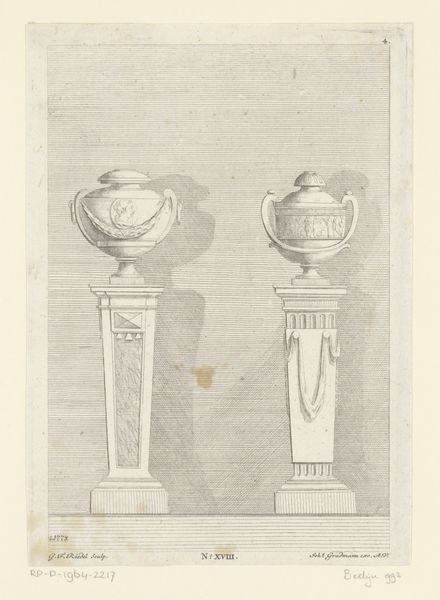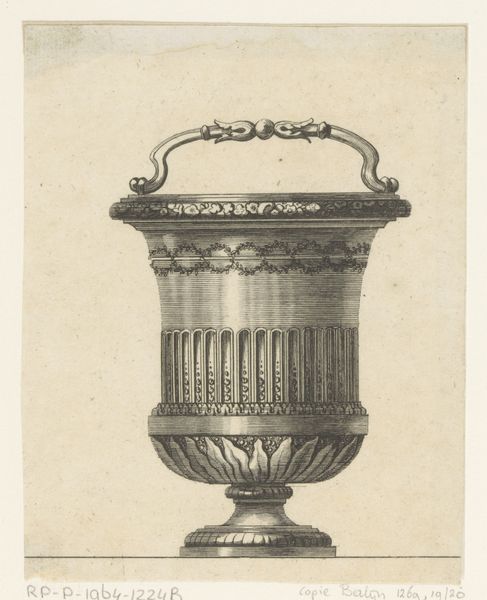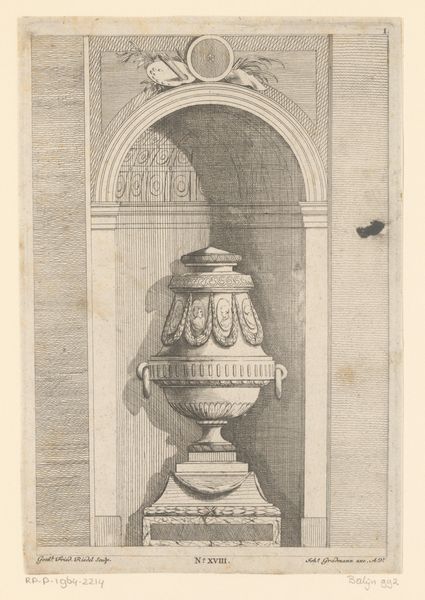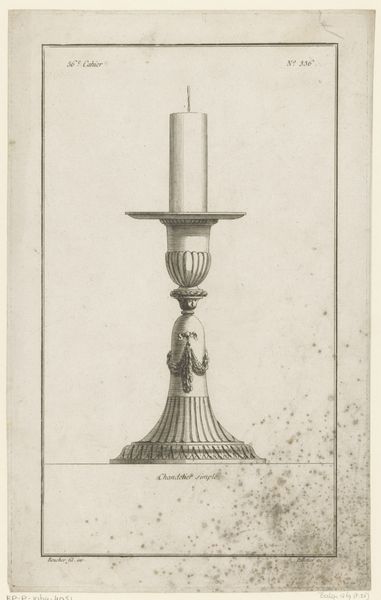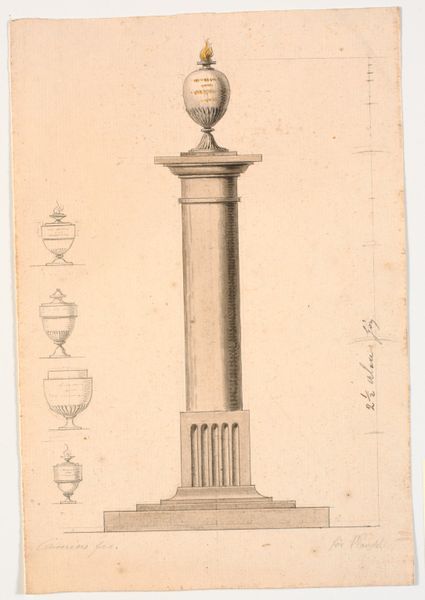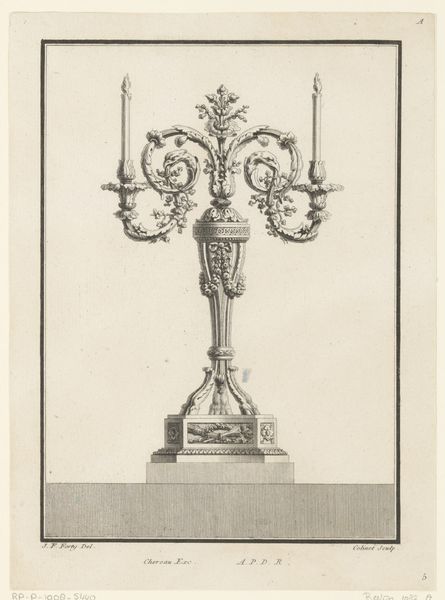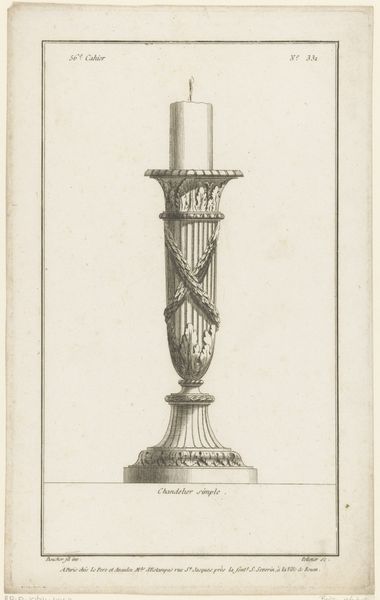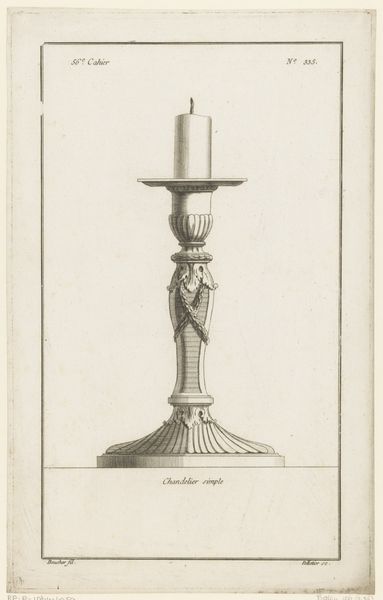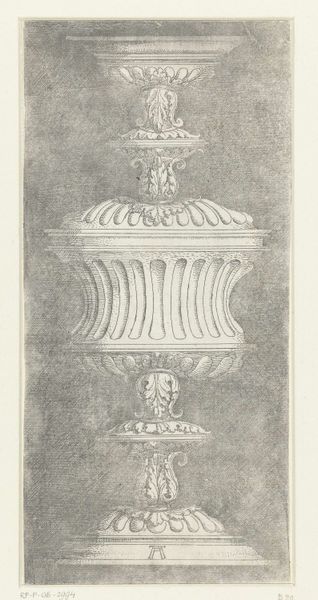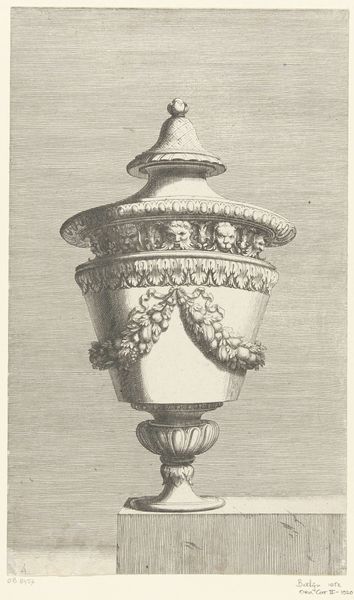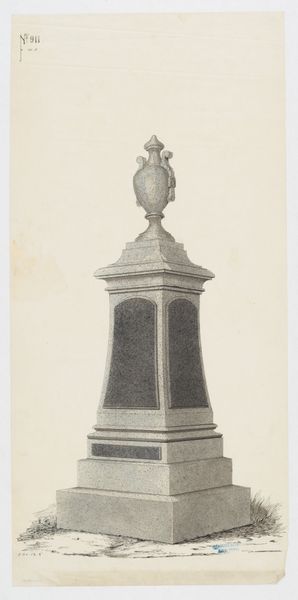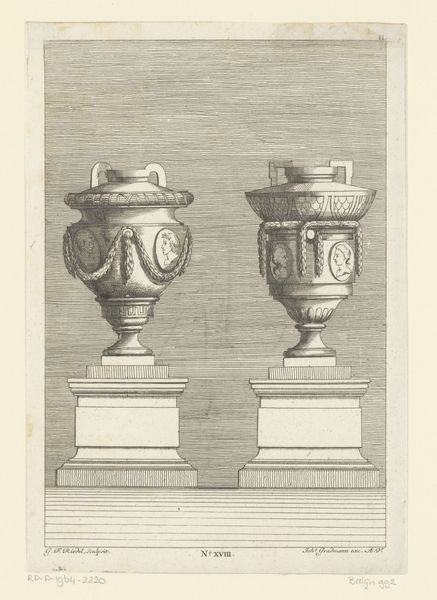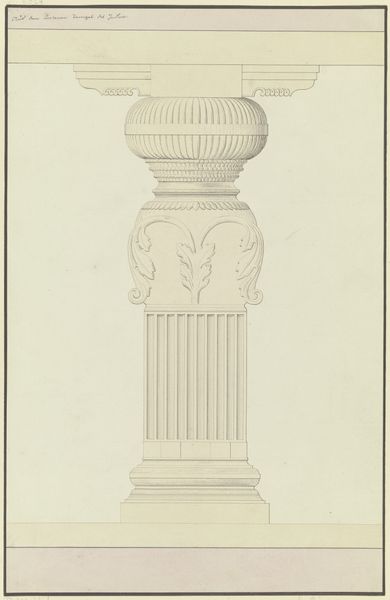
print, engraving
#
neoclacissism
# print
#
old engraving style
#
geometric
#
decorative-art
#
engraving
Dimensions: height 227 mm, width 154 mm
Copyright: Rijks Museum: Open Domain
Curator: Oh, hello! I’m instantly drawn to the engraving before us: "Vaas met vlammen op voetstuk," which translates to "Vase with Flames on a Pedestal," crafted between 1778 and 1779 by Gottlieb Friedrich Riedel. Editor: There’s such rigid grace to this; I imagine stumbling upon it in some old study. All the sharp lines give a sense of something poised and eternal...almost like a funerary monument but in a smaller, manageable scale. Is there something commemorative at play here? Curator: Yes, definitely! The piece exemplifies the Neoclassical movement, which was all about rediscovering and repurposing the aesthetic values of antiquity. We have it on paper, of course, an engraving, but can imagine it perhaps as part of a larger scheme for interiors, exteriors – possibly a garden or civic space. Think carefully arranged homage. Editor: I suppose the symmetry gets to me. Each garland, each line has a definite, unchanging purpose. Though, I can’t help but focus on the faces, that classical device set among each corner of the base. So perfectly generic in that era, do they represent anyone? Curator: We cannot be sure if these represent specific individuals, or maybe this wasn't Riedel's intent at all, as such designs served more as decorative models or as inspiration for other works. In terms of its time, we are dealing with a rise in classicism, particularly via archeology – literally unearthing the old empires as templates of power. A kind of artistic or even intellectual control is on display, isn’t it? Editor: I can feel that very well through Riedel’s arrangement of this form; the man held the keys to what the public found tastefully ideal and emotionally fulfilling. Thinking of that power to impact collective sentiments—well, that's no light matter. Even those flickering flames feel tamed into decorum at the summit. Curator: The Age of Enlightenment, isn’t it? Order and reason… This piece is part of the museum’s broader collection, where you will find it alongside similar drawings and prints from that period. Editor: Yes, it strikes me that it is as if he captured lightning in a bottle, but the bottle, rather than containing magic, organizes what we want the world to represent. Anyway, it’s quite a reminder to approach with skepticism everything one generation idealizes over another! Curator: An intellectual balancing act for the ages…and we get to see how beautifully it takes shape through art. Thank you!
Comments
No comments
Be the first to comment and join the conversation on the ultimate creative platform.
